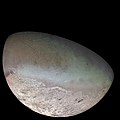
Sınaq göstərişi ölçüsü: 600 × 600 piksel. Digər ölçülər: 240 × 240 piksel | 480 × 480 piksel | 768 × 768 piksel | 1.024 × 1.024 piksel | 2.048 × 2.048 piksel | 4.700 × 4.700 piksel.
Faylın orijinalı (4.700 × 4.700 piksel, fayl həcmi: 12,11 MB, MIME növü: image/jpeg)
Faylın tarixçəsi
Faylın əvvəlki versiyasını görmək üçün gün/tarix bölməsindəki tarixlərə klikləyin.
| Tarix/Vaxt | Miniatür | Ölçülər | İstifadəçi | Şərh | |
|---|---|---|---|---|---|
| hal-hazırkı | 19:40, 10 oktyabr 2011 |  | 4.700 × 4.700 (12,11 MB) | Jbarta | Minimally compressed JPG from TIFF original at NASA. This image has already been colored by NASA. I think we have no business trying to "fix" the coloring. The only alteration made from the NASA original is to enlarge the canvas to enclose the complete sp |
| 21:00, 1 yanvar 2010 |  | 4.600 × 4.600 (2,81 MB) | Supportstorm | Image Adjustments: Auto levels on contrast and color | |
| 21:59, 18 fevral 2008 |  | 4.600 × 4.600 (1,71 MB) | Kaldari | same image, better dimensions | |
| 04:59, 8 aprel 2005 |  | 4.500 × 3.500 (1,96 MB) | Bricktop | same image, higher resolution | |
| 17:13, 3 aprel 2005 |  | 1.024 × 796 (150 KB) | Smartech~commonswiki | A color mosaic of Triton, Neptune's moon (large). Taken by Voyager 2 in 1989. Color was synthesized by combining high-resolution images taken through orange, violet, and ultraviolet filters; these images were displayed as red, green, and blue images and |
Faylın istifadəsi
Aşağıdakı 2 səhifə bu faylı istifadə edir:
Faylın qlobal istifadəsi
Bu fayl aşağıdakı vikilərdə istifadə olunur:
- af.wikipedia.org layihəsində istifadəsi
- an.wikipedia.org layihəsində istifadəsi
- ar.wikipedia.org layihəsində istifadəsi
- ary.wikipedia.org layihəsində istifadəsi
- arz.wikipedia.org layihəsində istifadəsi
- ast.wikipedia.org layihəsində istifadəsi
- azb.wikipedia.org layihəsində istifadəsi
- be-tarask.wikipedia.org layihəsində istifadəsi
- be.wikipedia.org layihəsində istifadəsi
- bg.wikipedia.org layihəsində istifadəsi
- bn.wikipedia.org layihəsində istifadəsi
- bn.wikibooks.org layihəsində istifadəsi
- bs.wikipedia.org layihəsində istifadəsi
- ca.wikipedia.org layihəsində istifadəsi
- Neptú (planeta)
- Satèl·lit natural
- Satèl·lits de Neptú
- Voyager 2
- Cronologia del descobriment dels planetes del sistema solar i dels seus satèl·lits naturals
- Viquipèdia:Articles espacials seleccionats
- Plantilla:Article espacial 01
- Llista d'objectes del sistema solar en equilibri hidroestàtic
- Llista de satèl·lits naturals
- Nomenclatura dels satèl·lits naturals
- Exploració de Neptú
- ckb.wikipedia.org layihəsində istifadəsi
Bu faylın qlobal istifadəsinə baxın.